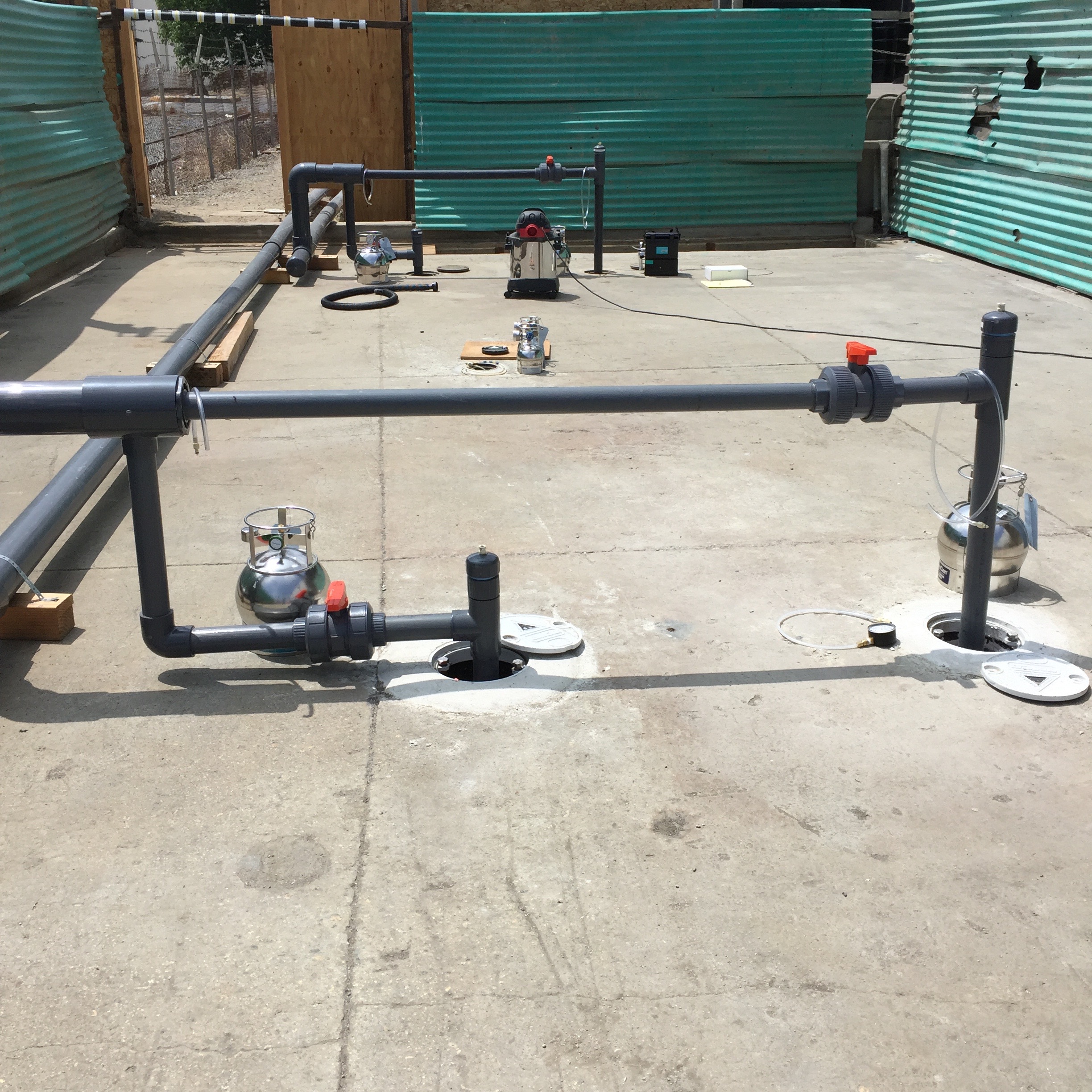QES has negotiated successfully with regulatory agencies including:
- United States Environmental Protection Agency (USEPA), Region IX,
- Cal EPA Department of Toxic Substances Control (DTSC),
- California Regional Water Quality Control Board (RWQCB) Central Valley, Los Angeles, and Santa Ana Regions,
- County agencies, including water districts,
- South Coast Air Quality Management Board (SCAQMD) permits to operate.
QES has negotiated agency-accepted site-specific cleanup criteria for soils and groundwater, including by:
- vadose zone fate and transport models (VLEACH, BIOSCREEN);
- risk-based soil gas values protective of indoor air quality (Johnson-Ettinger model);
- statistical characterization methods (e.g., stockpile characterization by EPA SW-846 Guidance); and,
- relying upon conclusions of site specific risk assessments.
Representative Project Descriptions:
USEPA, Region IX and the RWQCB LA for San Gabriel Valley Superfund site: QES served as oversight supervisor for USEPA, Region IX and the RWQCB Los Angeles Region, observing subcontractor field activities at several Operable Unit areas within the San Gabriel Valley Superfund site. Activities observed include drilling, construction, development, and sampling of deep (up to 900 feet below ground surface) monitoring wells and Westbay multiport monitoring systems. QES also participated in cost allocations and negotiations between PRP Steering Committees and USEPA.
RWQCB LA: For several sites, including a former Unocal chemical storage terminal and the Air Force Plant 42, QES used fate and transport modeling to develop soil screening and clean-up values exceeding levels provided in RWQCB-LA Region guidance. The values represent contaminant concentrations that can be left in place in soil without posing a risk to groundwater. The regulatory agencies agreed to the approach, which involved analysis using the VLEACH analytical model and a groundwater mixing cell model. The use of the screening values at the former Unocal site helped to minimize the volume of soil requiring excavation and off-site disposal (at tremendous cost savings for the client), and at Plant 42 helped to minimize vadose zone remediation efforts, and limited the soil boring investigation through the risk-based, fate and transport approach.
RWQCB – LA at Port of Los Angeles: Negotiated closure of a 25,000-gallon petroleum UST on a property in the Port of Los Angeles where eminent domain was exercised to acquire a truck loading facility as part of the Alameda corridor widening, QES managed litigation support, liability control, and site investigation and remediation at a multiple source site including a 25,000-gallon underground storage tank. As part of this comprehensive project, litigation support was provided to the City Attorney for purchase of a former truck loading facility. Environmental liabilities and costs were successfully negotiated into the property acquisition price and Pollution Legal Liability Insurance was secured for the client prior to the purchase of limited liability insurance. Monitored Natural Attenuation (MNA) was also successfully negotiated, screened with the BIOSCREEN model. The RWQCB approved the site characterization, which included geophysical and soil gas surveying (source identification) and HydroPunch and quarterly groundwater monitoring to support the MNA assessment.
DTSC: Achieved regulatory closure with unrestricted land use for an active chemical production facility where organic compounds were formerly used. Negotiation of closure with the RWQCB LA was achieved following 20 years of investigation of soil gas, soil, and groundwater quality and remediation of soil and ground water. Site specific soil gas screening values were derived using the Johnson-Ettinger model.
County of Riverside Environmental Health Department (EHD): As Project Manager for a litigation case involving a former agricultural property to be redeveloped for residential use, QES negotiated with the County of Riverside Environmental Health Department (EHD) to develop a soil management plan to handle organochlorine pesticide-impacted soil during site grading. QES supported legal counsel in negotiations with the County District Attorney to resolve a dispute about the representative average concentrations of organochlorine pesticides in the stockpiled soil and its proper disposition. QES characterized the stockpiled soil in accordance with the EPA SW-846 guidance, which includes collection of soil samples at random locations and depths and statistical analysis of the analytical results. Under close scrutiny by the County, QES developed soil management plans to address other on-site soil stockpiles previously generated at the Site, and remaining in-situ DDT-impacted soil requiring characterization and management during final site grading activities. Both methods were approved by the County EHD, and off-site disposal of impacted soil was minimized to hotspot areas where organochlorine pesticide concentrations exceeded USEPA Regional IX and California Preliminary Remediation Goals. Remaining soil was either buried on-site under future roadways or utility trenches, if impacted, or routinely graded and/or exported for use as clean fill.

